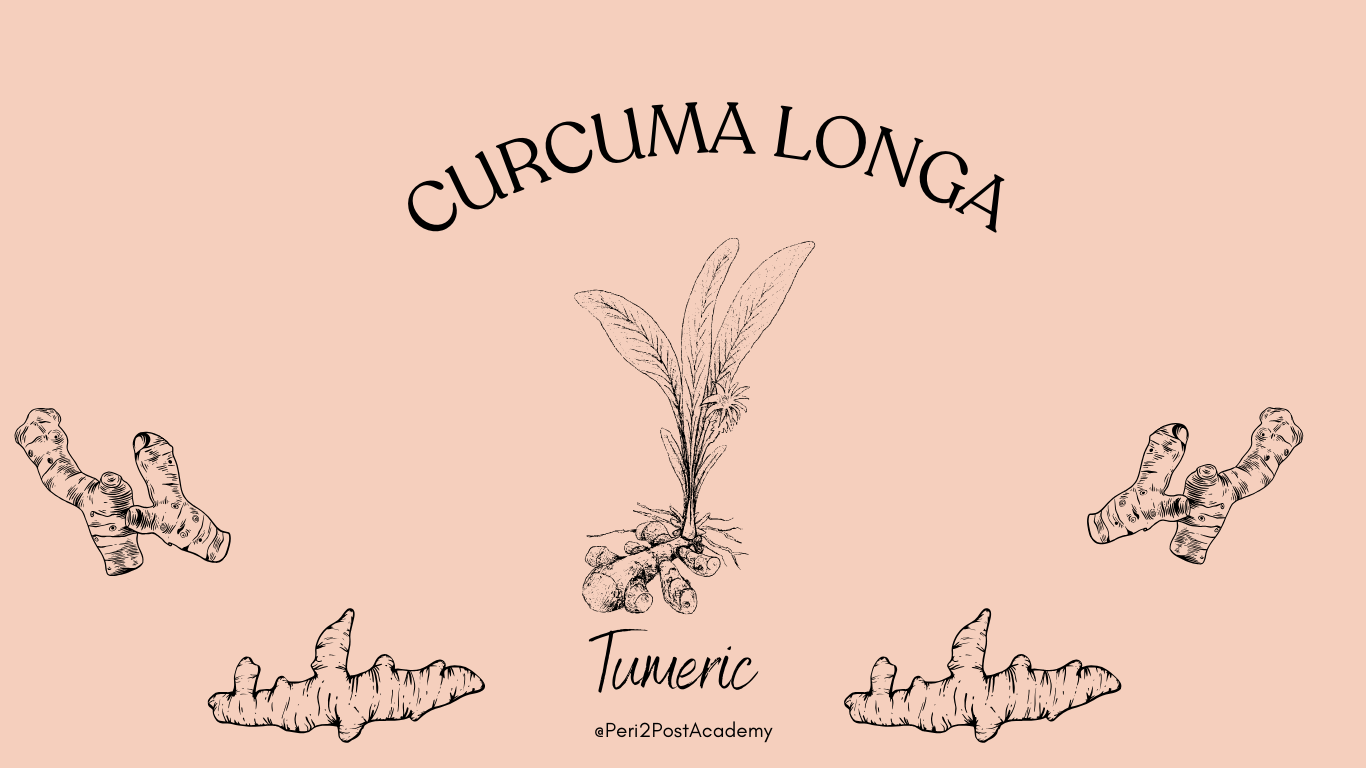Tumeric
My favorite spice! Red curry, roasted, juiced, sautéed, in tea, and everything in between is delicious to me.
Although some of turmeric’s 300 active components have been extensively studied, others are still a mystery. A handful of its known phytochemicals are as follows:
- Curcuminoids (curcumin, desmethoxycurcumin, bisdemethoxycurcumin, and calebin)
- Turmerones (tumerin, tumerones, turmeronols)
- Nutrients: iron, potassium, fatty acids – oleic acid, linolenic acid (ALA – Omega 3), linolenic acid (Omega 6), polysaccharide
Tumeric has many different ways that it acts on our biochemistry.
- a phytoestrogen
- anti-inflammatory
- antioxidant
- antihistamine
- anti-tumor
- anti-atherogenic
- analgesic (pain relieving)
- antimicrobial (bacteria, viruses, parasites, protozoa)
- cardioprotective (heart)
- digestive protective
- hepatoprotective (liver)
- Immune modulating
- nephroprotective (kidney)
- neuroprotective (brain)
Tumeric is a potent spice that is not recommended for everyone. There have been reports of complications with high-dose concentrated supplements, so please see your practitioner before starting them. The primary concerns are related to tumeric’s ability to thin the blood. It may interfere with some blood thinners and should be discontinued prior to surgery. Another issue is its ability to increase the effects of diabetic medicines.
- Weight Loss. Turmeric’s components regulate fat metabolism and may reduce visceral fat, which accumulates around our organs as we age. It achieves this by increasing adiponectin (a hormone) levels, which boost metabolism and fat breakdown.
- Blood Sugar and Diabetes As mentionedTumeric increases adiponectin levels. Adiponectin controls fat storage, insulin sensitivity, and glucose control among other metabolic functions. If you have diabetes, please check with your physician, as it may increase your diabetic medication.
- Heart Health. Turmeric is beneficial in this case because it thins the blood, improves blood vessel function, reduces arterial wall stiffness, increases blood flow, and lowers blood pressure. It can lower total cholesterol while increasing HDL, or “good,”cholesterol.
- Brain Health. It has strong neuroprotective properties. An increase in brain-derived neurotrophic factor (BDNF) is possible. BDNF helps form new brain connections. It may slow down neurodegenerative diseases associated with aging, such as Alzheimer’s.
- Pain. Its analgesic properties are similar to painkillers, but it also has anti-inflammatory properties that reduce pain, swelling, heat, and redness while increasing joint mobility.
- Immunity. As previously stated, it acts to regulate the immune system. Unfortunately, as estrogen levels decrease after menopause, so does your immune surveillance capacity, increasing your risk of new viral infections, viral reactivation of previous infections, bacterial infections, cancer, auto-immune disorders, and so on. Turmeric may be involved in all of this; it can boost overall immunity, increase NK cells that fight cancer, and balance autoimmunity.
- Cancer. It has an anti-tumor effect, which means it could help reduce and prevent cancer. It has chemosensitive and radiosensitive properties, which means it makes cancer cells more susceptible to conventional treatment. It may also alleviate the side effects of these medications, such as nausea, depression, and brain fog. Always seek professional advice before combining turmeric with oncology treatments.
- Bone Health. Turmeric’s phytoestrogen action was shown to slow bone loss caused by estrogen deficiency.
- Hot Flashes. This action is carried out via two mechanisms. Turmeric, as a phytoestrogen, mimics the effects of estrogen in the body. Another beneficial effect is the antihistamine effect.
- Urinary Health. Biofilm development by bacteria causing urinary tract infections is inhibited by turmeric. Unfortunately, menopausal urinary tract infections are rather common.
Check out the Recipes Here
There are approximately 8,000 articles on PubMed… Here a few that I utilized.
Soleimani V, Sahebkar A, Hosseinzadeh H. Turmeric (Curcuma longa) and its major constituent (curcumin) as nontoxic and safe substances: Review. Phytother Res. 2018 Jun;32(6):985-995. doi: 10.1002/ptr.6054. Epub 2018 Feb 26. PMID: 29480523.
Hay E, Lucariello A, Contieri M, Esposito T, De Luca A, Guerra G, Perna A. Therapeutic effects of turmeric in several diseases: An overview. Chem Biol Interact. 2019 Sep
Zdrojewicz Z, Szyca M, Popowicz E, Michalik T, Śmieszniak B. Kurkuma – nie tylko przyprawa [Turmeric – not only spice]. Pol Merkur Lekarski. 2017 Jun 23;42(252):227-230. Polish. PMID: 28662006.1;310:108729. doi: 10.1016/j.cbi.2019.108729. Epub 2019 Jun 27. PMID: 31255636.
Gupta SC, Sung B, Kim JH, Prasad S, Li S, Aggarwal BB. Multitargeting by turmeric, the golden spice: From kitchen to clinic. Mol Nutr Food Res. 2013 Sep;57(9):1510-28. doi: 10.1002/mnfr.201100741. Epub 2012 Aug 13. PMID: 22887802.
Azhdari M, Karandish M, Mansoori A. Metabolic benefits of curcumin supplementation in patients with metabolic syndrome: A systematic review and meta-analysis of randomized controlled trials. Phytother Res. 2019 May;33(5):1289-1301. doi: 10.1002/ptr.6323. Epub 2019 Apr 2. PMID: 30941814.
Abdelazeem B, Abbas KS, Shehata J, Baral N, Banour S, Hassan M. The effects of curcumin as dietary supplement for patients with polycystic ovary syndrome: An updated systematic review and meta-analysis of randomized clinical trials. Phytother Res. 2022 Jan;36(1):22-32. doi: 10.1002/ptr.7274. Epub 2021 Sep 13. PMID: 34517426.
